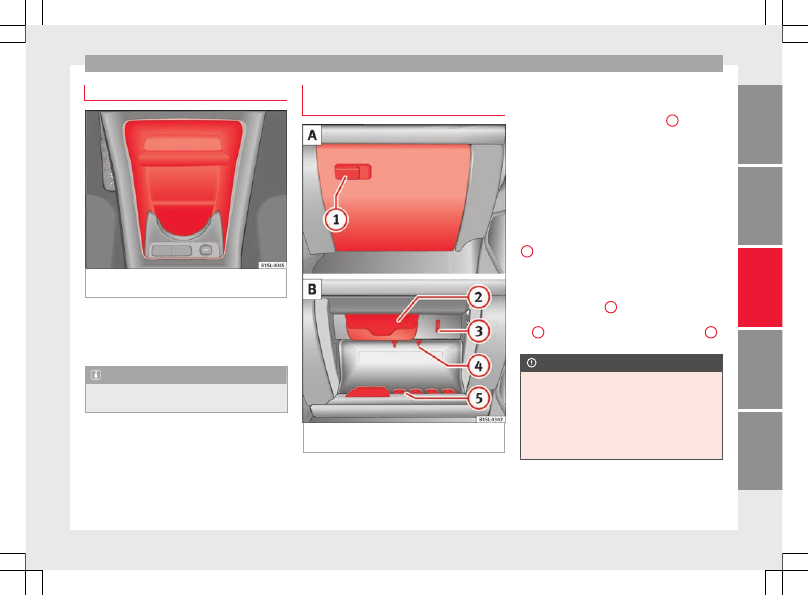Seat Mii. Service Manual - part 8
-------------------------------------------------------------------------------------------------------------------------------------------------------------

Transport and practical equipment
Compartment on the centre console
Fig. 122
In the front part of the centre con-
sole: storage compartment
The storage compartment
may be
used as a drink holder
or as an
ashtray*
or to store small ob-
jects.
Note
A 12 volt electrical socket
can be
found in the storage compartment.
Storage compartment with cover on
the passenger side*
Fig. 123
Storage compartment with cover on
the passenger side
There may be a storage compartment with
cover on the passenger side.
Opening and closing the storage compart-
ment cover
Pull the lever to open
To close, press the cover upwards until it
clicks into place.
Sunglasses storage compartment.
Sunglasses can be stored in the passenger
side storage compartment.
The sunglasses storage compartment is in
the upper area of the storage compartment
.
Supports
Next to the eyeglass storage compartment is
a notebook holder
and in the interior of
the storage compartment there is a pen hold-
er
4
, a map storage area and a coin tray
5
.
CAUTION
For structural reasons, some model versions
will have gaps behind the glove compartment
into which small objects may fall. This could
lead to strange noises and damage to the ve-
hicle. Therefore, do not store small objects in
the glove compartment, apart from those
stored in the spaces provided.
117